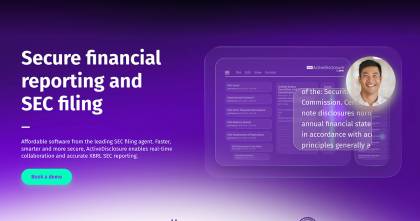With increasing scrutiny of how companies prioritize and report on Environmental, Social and Governance (ESG) activities, the U.S. Securities and Exchange Commission (SEC) is preparing to adopt new climate-related disclosure requirements for public companies. Increased interest in the topic ranges from the C-suite to investors to employees to regulators. Make no mistake, ESG reporting is now a priority for many companies, both public and private. It’s critical to understand that this isn’t just about reporting, but also mitigating risk and creating value for your company.
The ESG corporate reporting journey accelerated for many companies in 2017 when the Task Force on Climate-related Financial Disclosures (TCFD) developed industrywide climate-related reporting practices and recommendations. These recommendations provide a roadmap for companies to report on climate-related risks and opportunities. The TCFD later updated the report in 2019, identifying several areas where climate-related financial disclosures need improvement: wider use of scenario analysis, greater standardization of metrics, and more clarity on the fiscal impact of climate-related issues.
This reporting lands right in the middle of DFIN ESG Solutions’ wheelhouse. To help companies gain insights into the ESG reporting process and explain the importance and nuances behind the new guidelines, we created the The State of Climate Risk Disclosure: A Survey of US Companies, which can be downloaded from the DFIN Solutions website.
In March 2022, the SEC proposed “Enhanced and Standardized Climate-related Disclosure for Investors”. The proposed disclosures are broadly based on globally accepted disclosure frameworks, such as the TCFD and the Greenhouse Gas Protocol. To the SEC, the rule changes “would require registrants to include certain climate-related disclosures in their registration statements and periodic reports, including information about climate-related risks that are reasonably likely to have a material impact on their business, results of operations, or financial condition, and certain climate-related financial statement metrics in a note to their audited financial statements.” The proposed rule changes are organized by four pillars: governance, strategy, risk management, and metrics.
ESG impacts everyone
While the emphasis on ESG has been around for the past decade, the practice has been around since the 1960s—and the increased scrutinization by the SEC and other global regulators is just a natural evolution of the discussion. Whatever stakeholders are interested in this topic –investors, employees, customers, suppliers or board members – ESG has become a priority and with the increased focus on promoting sustainability, and identifying and managing climate-related risk and opportunities, it’s important for companies to go beyond simply reporting on their ESG activities.
The SEC proposed rules, largely based on the TCFD recommendations present a fantastic opportunity for companies to enhance their ESG story to the public. What are the company’s ESG and climate-related goals? How are the board of directors providing oversight of ESG risks and opportunities? How are they going to be aligned with business value creation and risk management? What are the company metrics and targets and are they aligned with specific goals?
The recently released TCFD’s 2022 annual assessment includes “Key Takeaways from Case Studies on Board Oversight”, which provides actional advice for anyone looking to adopt TCFD including:
- Effectively managing climate-related issues generally requires engaging a wide range of stakeholders across the company. Defining key roles and responsibilities early in the process is important when engaging multiple functions.
- Companies should consider leveraging public disclosures of peers and other types of companies when developing and enhancing their climate-related financial disclosures.
- Companies in jurisdictions where climate-related financial disclosures may or will become mandatory should begin preparing as early as possible and disclosing available information (noting areas where further work is needed).
Get ahead of the curve
Now is the time for companies to begin preparing and disclosing available information when practicable. With the SEC proposed rules set to be implemented, the question for companies becomes, how do you prepare, identify, collect, manage and report on ESG and climate activities to comply with the guidelines put forth by the TCFD and SEC? My suggestion is to rely on those companies that have the experience, regulatory and technical expertise, and SaaS software when needed, to assist with reporting.
DFIN is a leader in ESG and we offer clients proven best practices all of which are based on our hundreds of ESG client engagements. We are also ready to support our clients on their ESG journey now and can help each prepare for any/all regulatory changes and create a “fit for purpose” reporting and stakeholder communications plan.
See How We Helped FIS Develop an ESG Strategy and Award-winning Report
See How we helped a global manufacturer broaden its investor base
The key is to start now.
- Access DFIN’s 10th Edition Guide to Effective Proxies for innovative examples of; Board oversight of ESG and climate impact; Human Capital Management, Diversity, Equity, and Inclusion, ESG performance metrics and more.
- Identify how companies are raising the bar on ESG disclosure while reviewing over 400 innovative examples of SEC disclosure.
- Setup a complementary evaluation with our Proxy and ESG teams to start your journey on developing your ESG story for all stakeholders.
DFIN will continue to provide you with the latest updates to ensure that you are prepared and ready for whatever comes next. Continue to watch this space.


